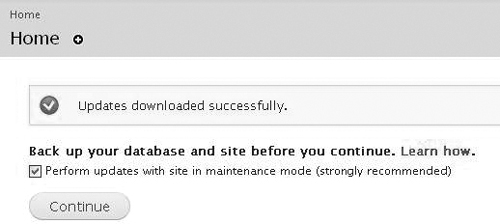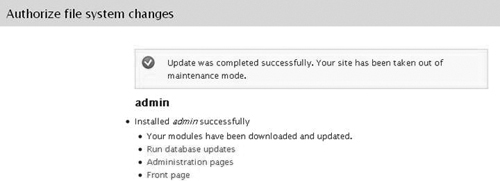Checking on Updates, Updating a Module
To manually check on whether there are updates for a module, you are using in Drupal, just log into your site as an administrator.
You might see a message pop up, but you can also click on Reports:
![]()
Then you can click on Available updates:

And on the Available updates page, you might see something like this:

In this case, Drupal is saying, okay, you have a Module named Admin.
The version of the module is 7.x-2.0-beta2.
And what this means is that the module is designed for Drupal version 7. (The “7.x” simply means that the module is compatible with 7.0, 7.1, 7.2, etc.)
And this notification is saying that an updated version is available, 7.x-2.0-beta3, so it’s an update.
So what you will want to do is click on the Update tab, because Drupal 7 makes your life a lot easier than it used to be for updating modules. It’s really quite great. It used to be that you’d need to download a file from somewhere, maybe drupal.org, maybe somewhere else, and then you’d need to log into your hosting account, upload the module to exactly the right place, adjust permissions, etc.—and then log into Drupal, and do various things. There was a lot of room for human error.
Disclaimer
Functions can change, as can the sequence of events and where you get messages. This is part of how open source software works; if things don’t work exactly in the sequence described, they may have changed for a variety of reasons. The best thing to do is just explore, and if you get stuck, try going to a forum on drupal.org and posing a question.
So (thanks, Drupal), it’s easier now. Just click on the Update tab:

And when you have a module that needs updating, it will show up in this list. Just click the checkbox next to the module you want to update and click “Download these updates”:

It will download the file, and you’ll get a message like this:

When you’re just starting a site out, you can probably get away with updating a module without backing up your database. The database is a file that contains all the stuff you’ve put on your site. There’s a nice module called Backup/Migrate that can help make this process easy, and we’ll take a look at it in Chapter 10, “Easy Administration–Ongoing Management.”
You can click the Continue button, but be aware that Drupal recommends backing up your database for a reason, because sometimes adding new code to your site, in the form of a new module, can cause problems or cause unforeseen things to happen. Then when you’re done, you should see a screen like Figure 6.7.

